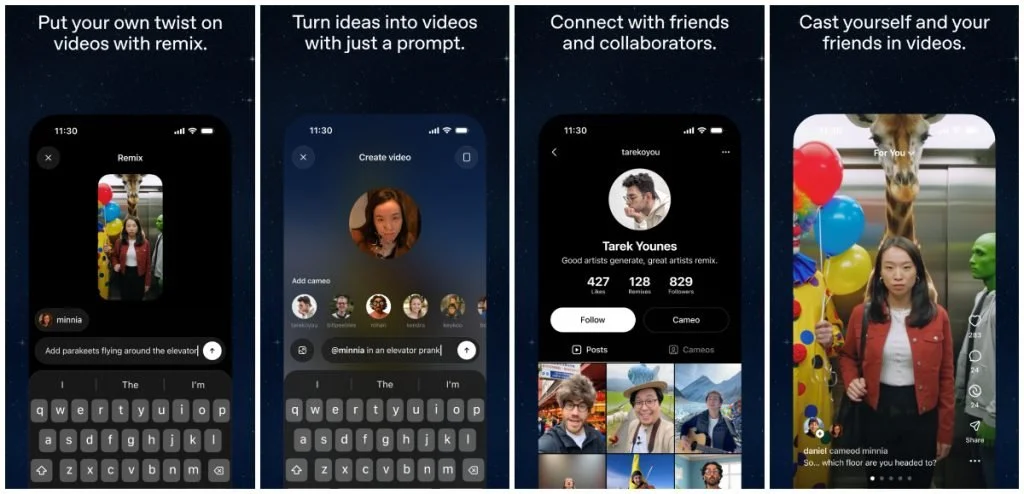Your Digital Twin is here: OpenAI releases Sora 2
This is the Fortnite skin economy meets TikTok virality—except the skin is you.
This week OpenAI released Sora 2. This is more than a model update: it's also a new social platform; but really it’s a social science experiment disguised as entertainment: model personalization for the masses. Your likeness (not just looks but voice too, it's all unified here) becomes an input, and the model starts to generate with you in it (and your friends if they share their cameo with you). That’s a seismic shift when it happens at this scale.
Image by OpenAI
At first glance, the "cameo" feels like a novelty—a deepfake for fun. But look closer, and you see something bigger: the cameo is a digital twin. But it’s not just pixels; it’s an evolving social asset tied to your history of posts and engagement, your stylistic fingerprints, your network of remixes. It’s identity in motion, distributed by AI.
It doesn’t take much imagination to see an economy forming around this. Cameos turn into everyday things you can use in many ways social media is already used:
Friend cameos: Dropping your likeness into a buddy’s video, just for the laugh or the flex. (I've already had one friend text me to "open up your cameo dude!!")
Custom services: People who help creators and influencers build sharper, more polished versions of their digital selves.
Brand tie-ins: Your digital twin trying on the new sneakers, wearing the season’s drop, or popping up in a music video collab, but it gets posted to the brand's account not just your personal, creating a even stronger feedback loop around content created by stans.
Interestingly, by mainstreaming the digital twin, OpenAI reframes the deepfake panic (this is terrifying, but real; it's happening whether we are ready or not). Once everyone’s used to playful, participatory versions of themselves, the fear of “fake video = threat” gets replaced by a shrug: “That wasn’t me, that was my cameo.” What once felt like violation now feels like participation.
But the underlying BIG DEAL here: every cameo leaves a data trail. Each remix shows the system what styles and choices you gravitate toward. Each share is basically you teaching the model how you’d like to be seen. OpenAI isn’t just making a toy here—they’re quietly collecting the most detailed personalization dataset ever. That’s the real edge. That's the moat.
The bet is bold but clear: building AI identity requires building a new social space, not just bolting a new feature onto an old one. If OpenAI pull it off, they don’t just run the model under the hood, they own the social graph that shows who we are inside this new space. Rinse and repeat to make better models. The snake is officially eating it's own tail.

